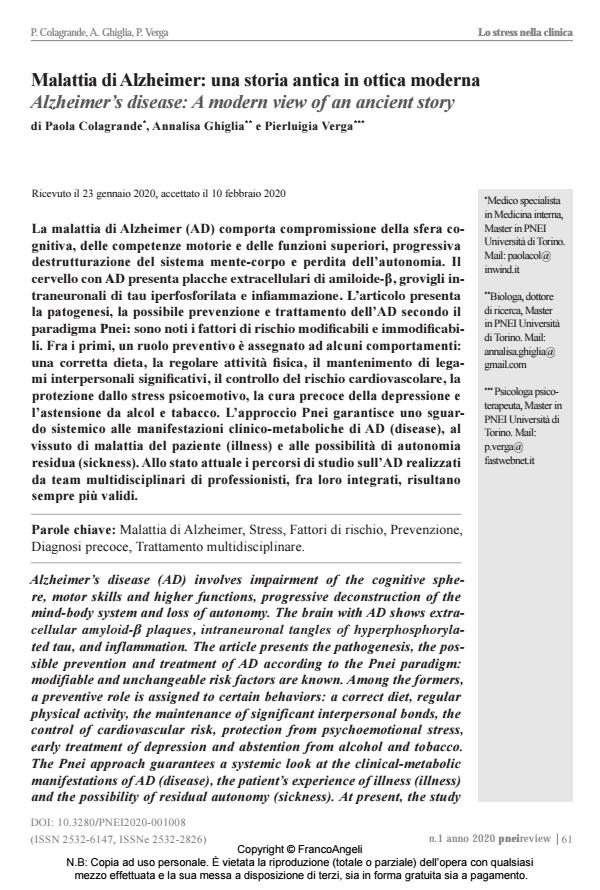Alzheimer’s disease: A modern view of an ancient story
Journal title PNEI REVIEW
Author/s Paola Colagrande, Annalisa Ghiglia, Pierluigia Verga
Publishing Year 2020 Issue 2020/1
Language Italian Pages 9 P. 61-69 File size 543 KB
DOI 10.3280/PNEI2020-001008
DOI is like a bar code for intellectual property: to have more infomation
click here
Below, you can see the article first page
If you want to buy this article in PDF format, you can do it, following the instructions to buy download credits

FrancoAngeli is member of Publishers International Linking Association, Inc (PILA), a not-for-profit association which run the CrossRef service enabling links to and from online scholarly content.
Alzheimer’s disease (AD) involves impairment of the cognitive sphere, motor skills and higher functions, progressive deconstruction of the mind-body system and loss of autonomy. The brain with AD shows extracellular amyloid-β plaques, intraneuronal tangles of hyperphosphorylated tau, and inflammation. The article presents the pathogenesis, the possible prevention and treatment of AD according to the Pnei paradigm: modifiable and unchangeable risk factors are known. Among the formers, a preventive role is assigned to certain behaviors: a correct diet, regular physical activity, the maintenance of significant interpersonal bonds, the control of cardiovascular risk, protection from psychoemotional stress, early treatment of depression and abstention from alcohol and tobacco. The Pnei approach guarantees a systemic look at the clinical-metabolic manifestations of AD (disease), the patient’s experience of illness (illness) and the possibility of residual autonomy (sickness). At present, the study courses on AD created by multidisciplinary teams of professionals, integrated with each other, are increasingly valid.
Keywords: Alzheimer’s disease, Stress, Risk factors, Prevention, Early diagnosis, Multidisciplinary treatment.
Paola Colagrande, Annalisa Ghiglia, Pierluigia Verga, Malattia di Alzheimer: una storia antica in ottica moderna in "PNEI REVIEW" 1/2020, pp 61-69, DOI: 10.3280/PNEI2020-001008